Gold(III) chloride
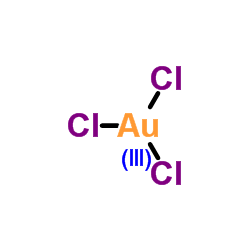
Gold(III) chloride structure
|
Common Name | Gold(III) chloride | ||
|---|---|---|---|---|
| CAS Number | 13453-07-1 | Molecular Weight | 303.326 | |
| Density | 3.9 g/mL at 25ºC | Boiling Point | N/A | |
| Molecular Formula | AuCl3 | Melting Point | 254ºC | |
| MSDS | Chinese USA | Flash Point | N/A | |
| Symbol |

GHS07 |
Signal Word | Warning | |
| Name | Gold(III) chloride |
|---|---|
| Synonym | More Synonyms |
| Density | 3.9 g/mL at 25ºC |
|---|---|
| Melting Point | 254ºC |
| Molecular Formula | AuCl3 |
| Molecular Weight | 303.326 |
| Exact Mass | 301.873047 |
| InChIKey | RJHLTVSLYWWTEF-UHFFFAOYSA-K |
| SMILES | Cl[Au](Cl)Cl |
| Storage condition | 2-8°C |
| Water Solubility | soluble |
Synonym:Auric Chloride; Auric Trichloride; Gold Trichloride Section 2 - COMPOSITION, INFORMATION ON INGREDIENTS
Risk Phrases: 36/37/38 Section 3 - HAZARDS IDENTIFICATION EMERGENCY OVERVIEW
Irritating to eyes, respiratory system and skin.Hygroscopic (absorbs moisture from the air).Light sensitive.The toxicological properties of this material have not been fully investigated. Potential Health Effects Eye: Causes eye irritation. May cause chemical conjunctivitis. Skin: Causes skin irritation. Ingestion: May cause gastrointestinal irritation with nausea, vomiting and diarrhea. The toxicological properties of this substance have not been fully investigated. Inhalation: Causes respiratory tract irritation. The toxicological properties of this substance have not been fully investigated. Can produce delayed pulmonary edema. Chronic: Effects may be delayed. Adverse reproductive effects have been reported in animals. Section 4 - FIRST AID MEASURES Eyes: Immediately flush eyes with plenty of water for at least 15 minutes, occasionally lifting the upper and lower eyelids. Get medical aid. Skin: Get medical aid. Flush skin with plenty of water for at least 15 minutes while removing contaminated clothing and shoes. Wash clothing before reuse. Ingestion: Get medical aid. Do NOT induce vomiting. If conscious and alert, rinse mouth and drink 2-4 cupfuls of milk or water. Inhalation: Remove from exposure and move to fresh air immediately. If not breathing, give artificial respiration. If breathing is difficult, give oxygen. Get medical aid. Notes to Physician: Treat symptomatically and supportively. Section 5 - FIRE FIGHTING MEASURES General Information: As in any fire, wear a self-contained breathing apparatus in pressure-demand, MSHA/NIOSH (approved or equivalent), and full protective gear. During a fire, irritating and highly toxic gases may be generated by thermal decomposition or combustion. Extinguishing Media: Use agent most appropriate to extinguish fire. Use water spray, dry chemical, carbon dioxide, or appropriate foam. Section 6 - ACCIDENTAL RELEASE MEASURES General Information: Use proper personal protective equipment as indicated in Section 8. Spills/Leaks: Vacuum or sweep up material and place into a suitable disposal container. Clean up spills immediately, observing precautions in the Protective Equipment section. Avoid generating dusty conditions. Provide ventilation. Section 7 - HANDLING and STORAGE Handling: Wash thoroughly after handling. Use with adequate ventilation. Minimize dust generation and accumulation. Avoid contact with eyes, skin, and clothing. Keep container tightly closed. Avoid ingestion and inhalation. Store protected from light. Wash clothing before reuse. Storage: Store in a tightly closed container. Store in a cool, dry, well-ventilated area away from incompatible substances. Store protected from moisture. Section 8 - EXPOSURE CONTROLS, PERSONAL PROTECTION Engineering Controls: Facilities storing or utilizing this material should be equipped with an eyewash facility and a safety shower. Use adequate ventilation to keep airborne concentrations low. Exposure Limits CAS# 13453-07-1: Personal Protective Equipment Eyes: Wear appropriate protective eyeglasses or chemical safety goggles as described by OSHA's eye and face protection regulations in 29 CFR 1910.133 or European Standard EN166. Skin: Wear appropriate protective gloves to prevent skin exposure. Clothing: Wear appropriate protective clothing to prevent skin exposure. Respirators: A respiratory protection program that meets OSHA's 29 CFR 1910.134 and ANSI Z88.2 requirements or European Standard EN 149 must be followed whenever workplace conditions warrant respirator use. Section 9 - PHYSICAL AND CHEMICAL PROPERTIES Physical State: Powder Color: brown - gold Odor: Not available. pH: Not available. Vapor Pressure: Not available. Viscosity: Not available. Boiling Point: Not available. Freezing/Melting Point: 254 deg C Autoignition Temperature: Not applicable. Flash Point: Not applicable. Explosion Limits, lower: Not available. Explosion Limits, upper: Not available. Decomposition Temperature: Solubility in water: Specific Gravity/Density: Molecular Formula: AuCl3 Molecular Weight: 303.32 Section 10 - STABILITY AND REACTIVITY Chemical Stability: Stable at room temperature in closed containers under normal storage and handling conditions. Conditions to Avoid: Incompatible materials, light, dust generation, excess heat, exposure to moist air or water. Incompatibilities with Other Materials: Moisture, ammonia, amines. Hazardous Decomposition Products: Irritating and toxic fumes and gases, oxides of chlorine. Hazardous Polymerization: Has not been reported Section 11 - TOXICOLOGICAL INFORMATION RTECS#: CAS# 13453-07-1: MD5420000 LD50/LC50: Not available. Carcinogenicity: Gold (III) Chloride - Not listed by ACGIH, IARC, or NTP. Other: See actual entry in RTECS for complete information. Section 12 - ECOLOGICAL INFORMATION Section 13 - DISPOSAL CONSIDERATIONS Dispose of in a manner consistent with federal, state, and local regulations. Section 14 - TRANSPORT INFORMATION IATA Shipping Name: Not regulated. Hazard Class: UN Number: Packing Group: IMO Shipping Name: Not regulated. Hazard Class: UN Number: Packing Group: RID/ADR Shipping Name: Not regulated. Hazard Class: UN Number: Packing group: Section 15 - REGULATORY INFORMATION European/International Regulations European Labeling in Accordance with EC Directives Hazard Symbols: XI Risk Phrases: R 36/37/38 Irritating to eyes, respiratory system and skin. Safety Phrases: S 26 In case of contact with eyes, rinse immediately with plenty of water and seek medical advice. S 28A After contact with skin, wash immediately with plenty of water. S 37 Wear suitable gloves. S 37/39 Wear suitable gloves and eye/face protection. S 45 In case of accident or if you feel unwell, seek medical advice immediately (show the label where possible). WGK (Water Danger/Protection) CAS# 13453-07-1: 2 Canada CAS# 13453-07-1 is listed on Canada's DSL List. CAS# 13453-07-1 is listed on Canada's Ingredient Disclosure List. US FEDERAL TSCA CAS# 13453-07-1 is listed on the TSCA inventory. SECTION 16 - ADDITIONAL INFORMATION N/A |
CHEMICAL IDENTIFICATION
HEALTH HAZARD DATAACUTE TOXICITY DATA
MUTATION DATA
|
| Symbol |

GHS07 |
|---|---|
| Signal Word | Warning |
| Hazard Statements | H315-H319-H335 |
| Precautionary Statements | P261-P305 + P351 + P338 |
| Personal Protective Equipment | dust mask type N95 (US);Eyeshields;Gloves |
| Hazard Codes | Xi:Irritant; |
| Risk Phrases | R36/37/38 |
| Safety Phrases | S26-S37/39 |
| RIDADR | UN 3260 8 |
| WGK Germany | 3 |
| RTECS | MD5420000 |
| Packaging Group | III |
| Precursor 10 | |
|---|---|
| DownStream 10 | |
|
Designed self-assembling peptides as templates for the synthesis of metal nanoparticles.
Methods Mol. Biol. 996 , 195-202, (2013) Self-assembling peptides are water soluble and form biocompatible nanostructures under mild conditions through non-covalent interactions. They form supramolecular structures such as ribbons, nanotubes... |
|
|
Metal patch test results from 1990-2009.
J. Dermatol. 38(3) , 267-71, (2011) Although metals are common contact allergens, clinical findings of metal contact dermatitis have varied. Such patients have subsequently become rare in Japan as gold dermatitis caused by ear piercing ... |
|
|
Gold(III) chloride catalyzed regioselective synthesis of pyrano[3,4-b]indol-1(9H)-ones and evaluation of anticancer potential towards human cervix adenocarcinoma.
Bioorg. Med. Chem. Lett. 21 , 4170, (2011) A highly regioselective synthesis of pyrano[3,4-b]indol-1(9H)-ones via gold(III) chloride catalyzed cycloisomerization of 3-ethynyl-indole-2-carboxylic acid was achieved in good to excellent yields. T... |
| Auric chloride |
| Gold(III) chloride |
| Trichlorogold |
| EINECS 240-948-4 |
| Gold trichloride |
| gold(iii) trichloride |
| Auric trichloride |
| gold(3+) chloride |
| AuCl3 |
| MFCD00011322 |
| Gold(3+) trichloride |
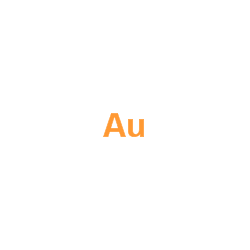 CAS#:7440-57-5
CAS#:7440-57-5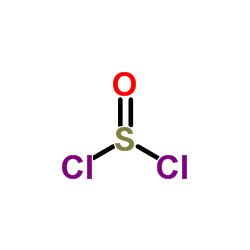 CAS#:7719-09-7
CAS#:7719-09-7 CAS#:7782-50-5
CAS#:7782-50-5 CAS#:50960-82-2
CAS#:50960-82-2 CAS#:7647-01-0
CAS#:7647-01-0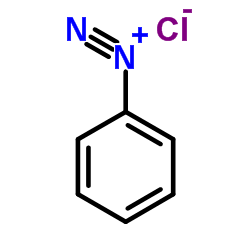 CAS#:100-34-5
CAS#:100-34-5 CAS#:7647-18-9
CAS#:7647-18-9 CAS#:10025-67-9
CAS#:10025-67-9 CAS#:7791-25-5
CAS#:7791-25-5 CAS#:63947-88-6
CAS#:63947-88-6 CAS#:75-44-5
CAS#:75-44-5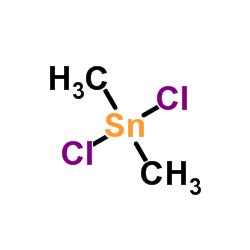 CAS#:753-73-1
CAS#:753-73-1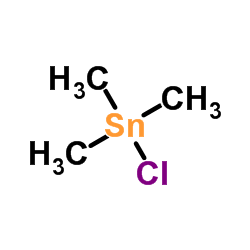 CAS#:1066-45-1
CAS#:1066-45-1 CAS#:7784-34-1
CAS#:7784-34-1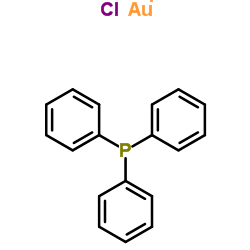 CAS#:14243-64-2
CAS#:14243-64-2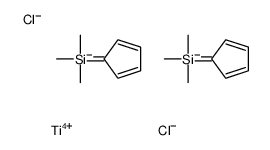 CAS#:59307-41-4
CAS#:59307-41-4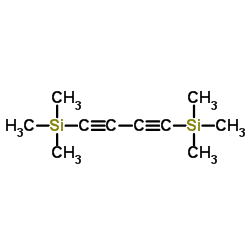 CAS#:4526-07-2
CAS#:4526-07-2 CAS#:10294-28-7
CAS#:10294-28-7
